
The Society of La Florida
WHO OCCUPIED LA FLORIDA?
Menéndez de Avilés led an authentic micro-society to Florida: carpenters, masons, builders, shoemakers, garment-makers, blacksmiths, millers, needleworkers, silversmiths, cooks, clergymen, book-makers, master beer brewers and more. They came with the intention of founding a permanent and stable population.
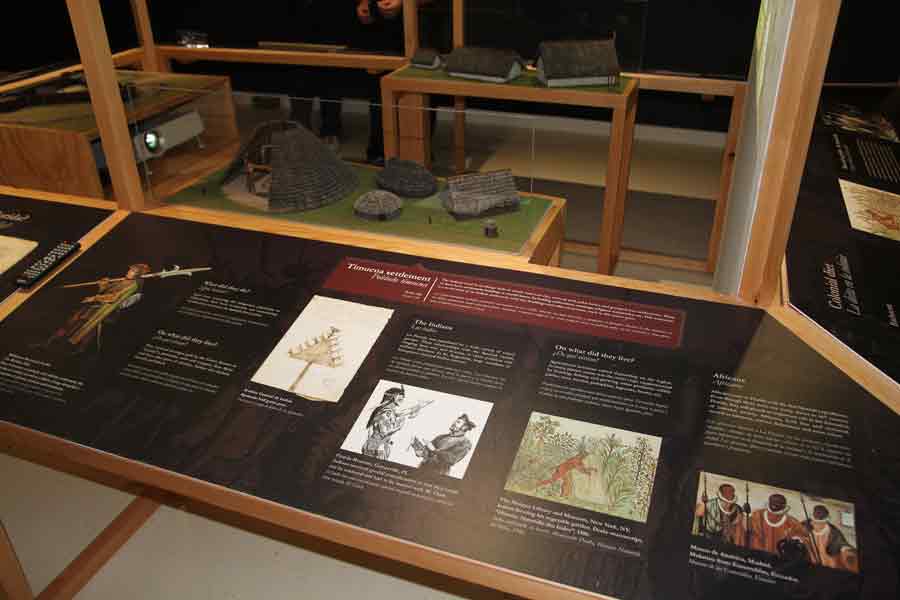
What did they do?
Apart from converting the indigenous population to Christianity, their main occupation was maintaining fortifications to protect the Spanish fleet system.
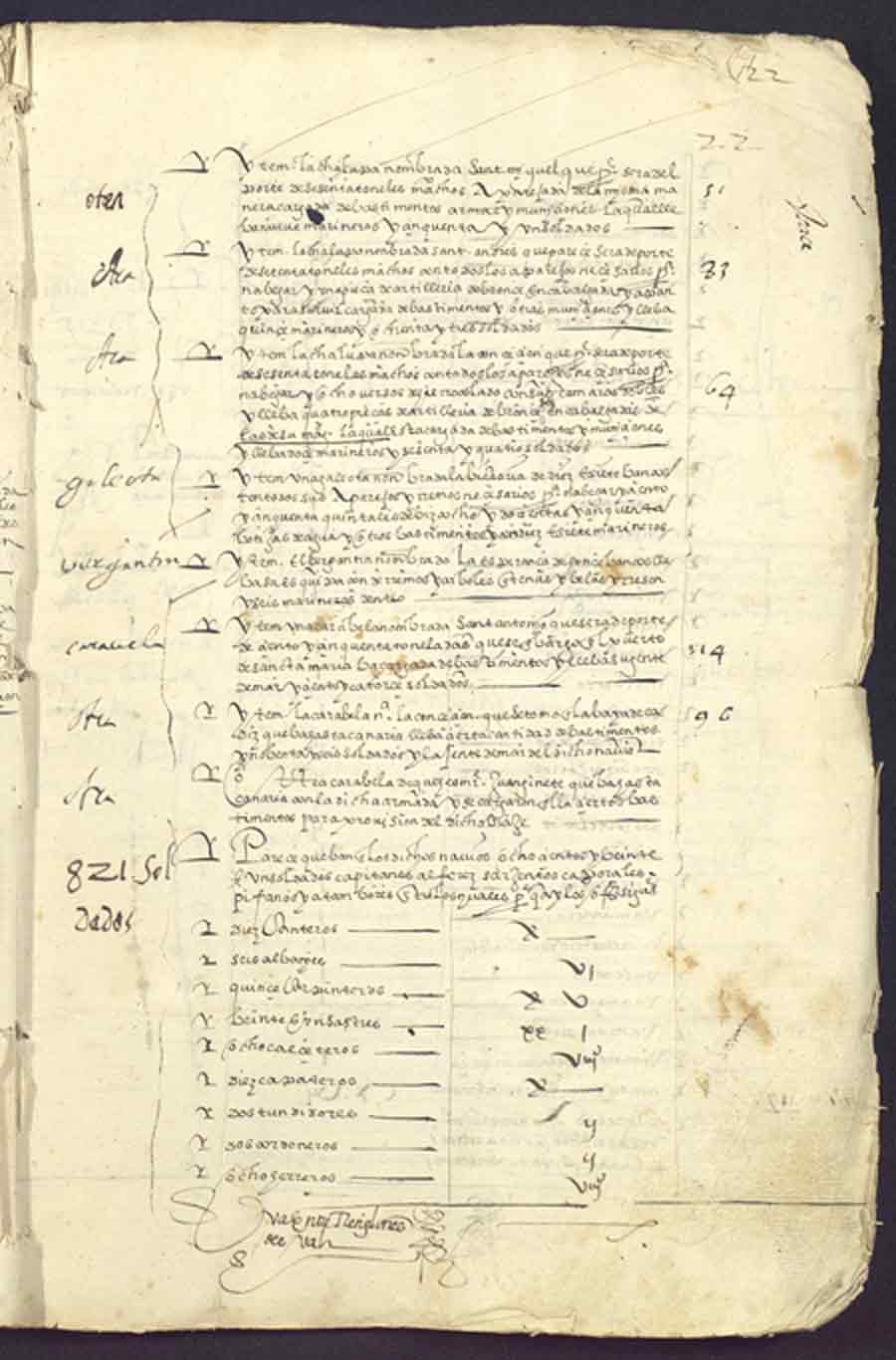
This document shows a section of the people who came to La Florida with the Menéndez de Avilés armada.
Archivo General de Indias, Sevilla
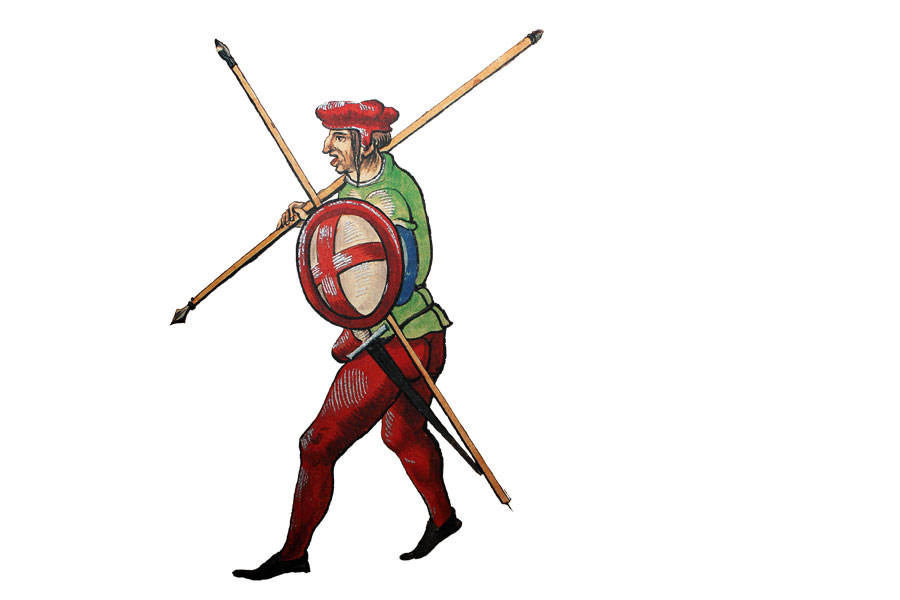
Since it became a strategic and military settlement, the majority of settlers served as soldiers, living alongside a small number of priests, artisans and merchants.
Ch. Weiditz, 1529. Biblioteca Provincial, Sevilla.
On what did they live?
They survived on wages paid by the Crown (known as "situado"), provisions, tools and weapons from Spain and from other parts of America. Settlers also farmed, hunted, and fished.
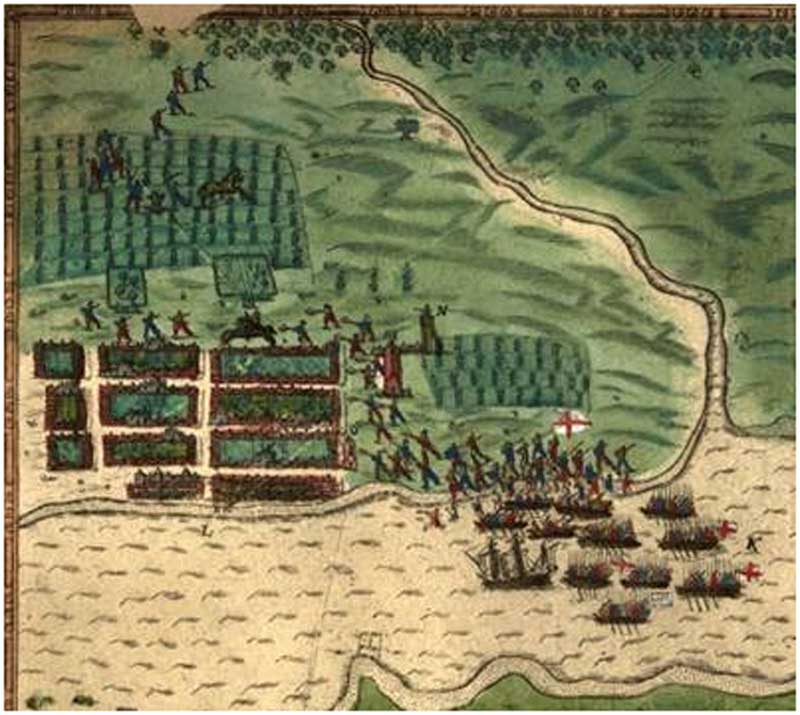
The Spanish crown feared attacks by French and English pirates, like the one led by F. Drake, in 1586
Map by B. Boazio, 1589.
The Indians
La Florida was populated by a wide variety of ethnic groups. Their relationships with the Spanish varied, ranging from war and treason, to close political and military alliances. In St. Augustine, large numbers of Europeans married Indian women.
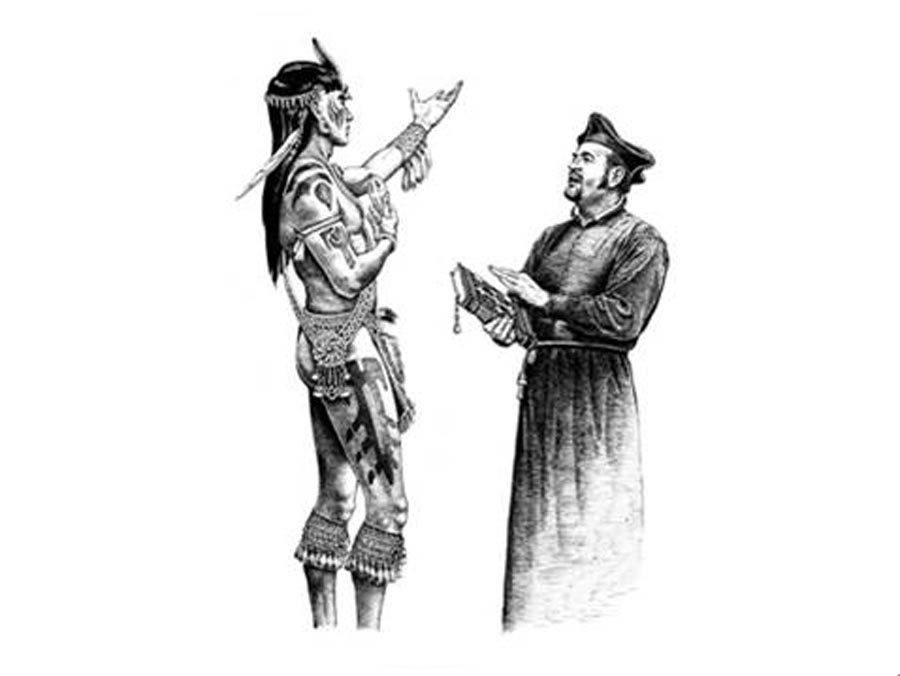
Indians received special consideration in that they could not be enslaved and had to be treated well.
M. Clark. Florida Museum, Gainesville, FL.
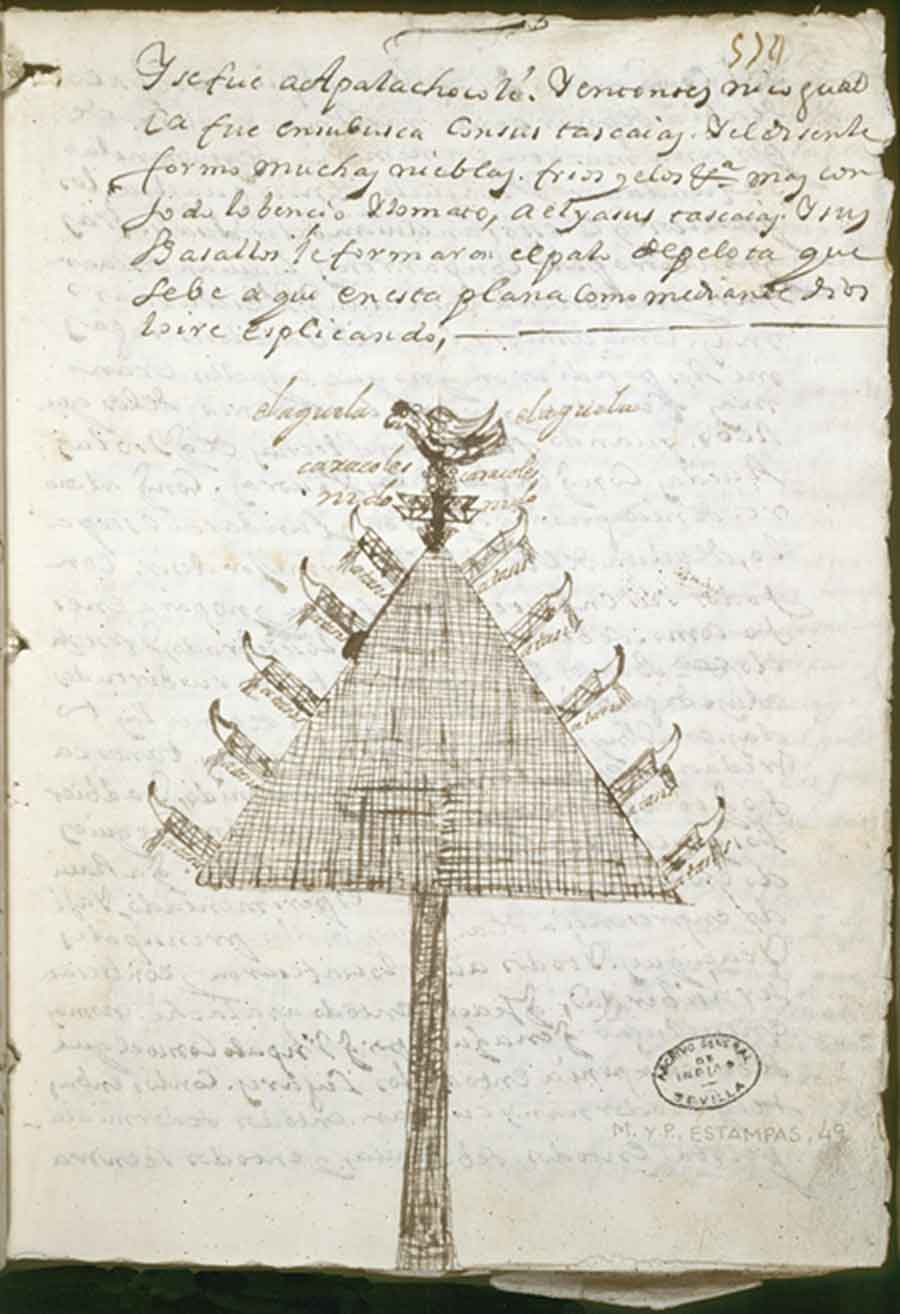
Apalache ball game post.
Archivo General de Indias, Sevilla
On what did they live?
Agricultural practices varied depending on the region. In many places, maize was the main crop, supplemented by hunting, fishing and growing other products: edible palms, nuts, berries, pumpkins, legumes, beans, etc.
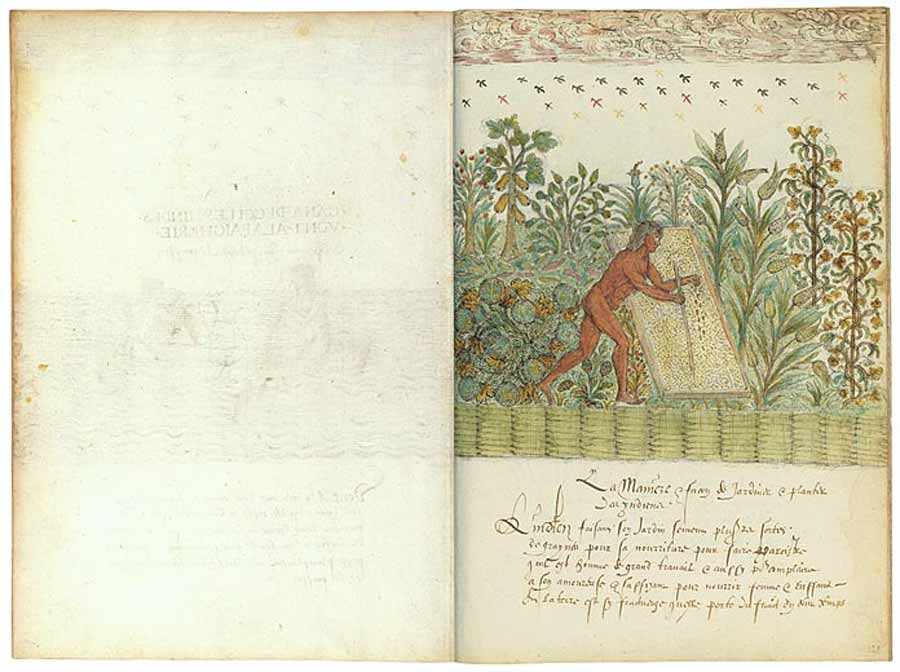
Indian farming his vegetable garden. Drake manuscript, Histoire Naturelle des Indes, 1586.
The Morgan Library and Museum, New York, NY.
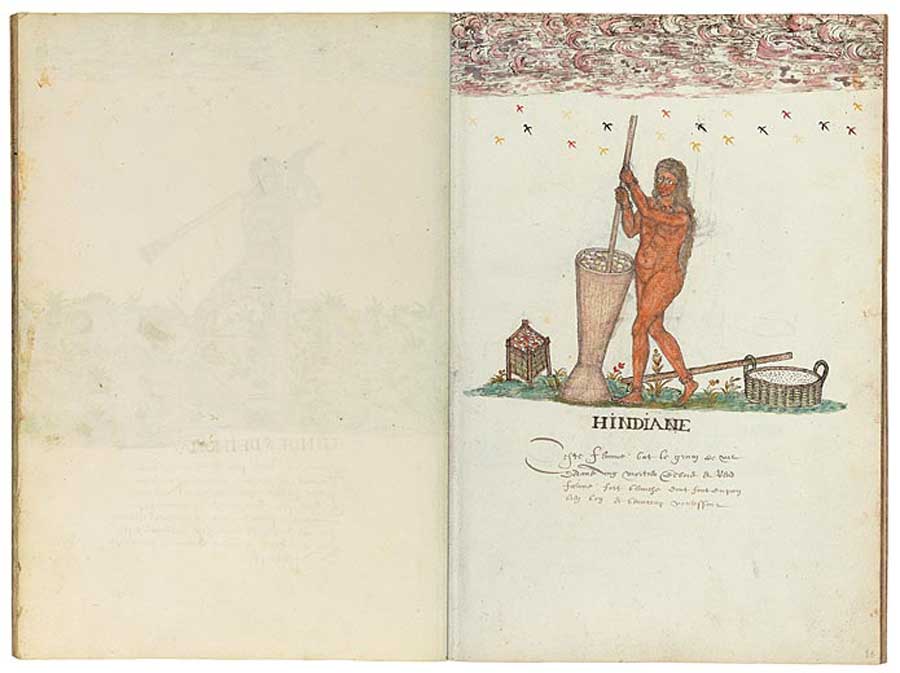
Indian woman grinding wheat with a wooden mortar. Drake manuscript, Histoire Naturelle des Indes, 1586.
The Morgan Library and Museum, New York, NY.
Timucua settlement
The Indians lived in dwellings built of wood, mud and clay, covered with palm leaves and grouped into settlements. Many of them had a community building, or council house, for holding celebrations, meetings, religious ceremonies, etc. This miniature is a re-creation of an Indian settlement, with the dwellings and other structures, such as the maize store.
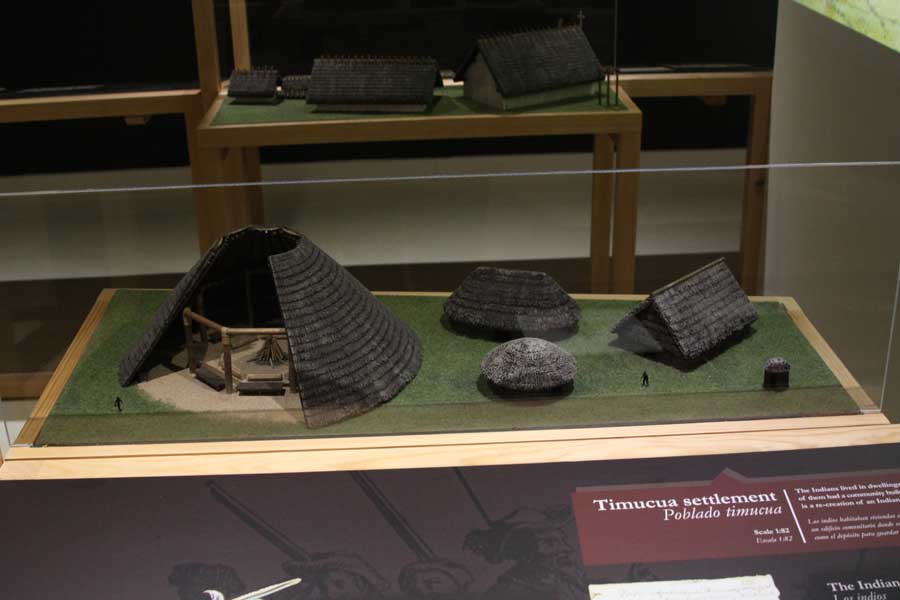
Timucua settlement
Miniature Scale 1:82
Africans
Africans came to Florida with the first Spanish expeditions. Even though there were not many slaves in 16th century Florida, they still played an important role in the formation of colonial society. Africans, both free and enslaved, served as laborers, nurses, fishermen and town criers.
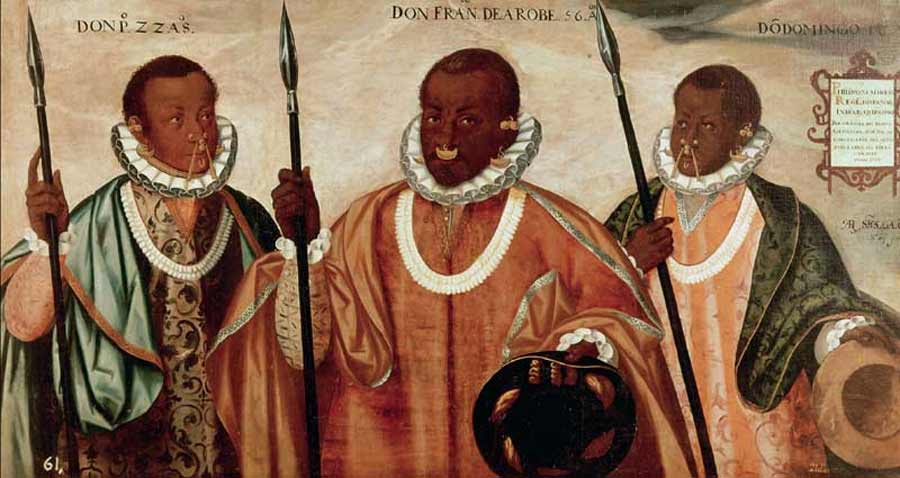
Mulattos from Esmeraldas, Ecuador.
Museo de América, Madrid.
Hear stories of the time
MARÍA. An African Nurse in 16th Century Florid
DON JUAN. Forgotten Chief
The "Our Father" in Timucua